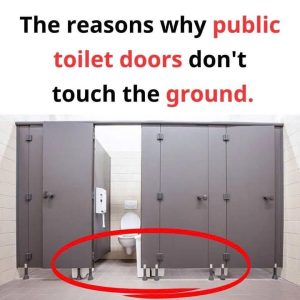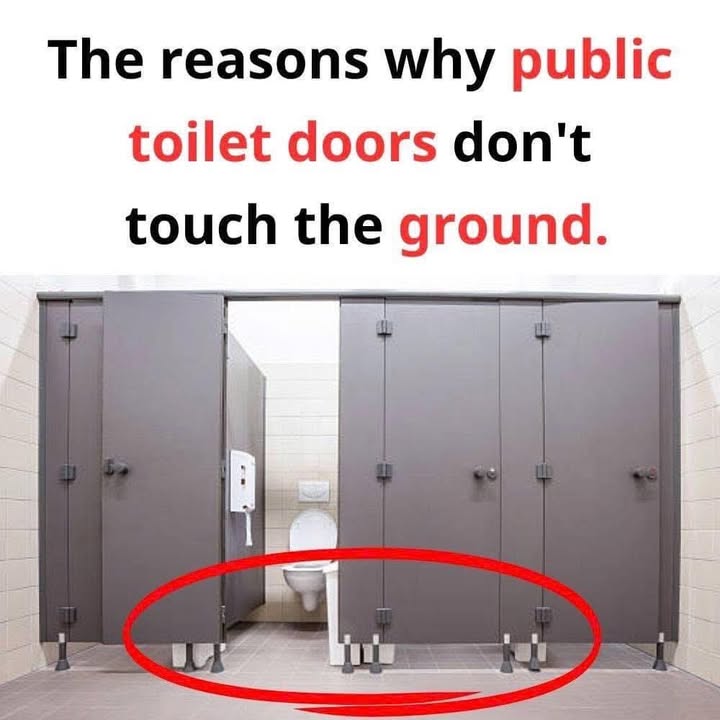The Real Reasons Why the Doors of Public Restroom Stalls Don’t Reach the Floor
Have you ever entered a public restroom and questioned why the doors to the stalls don’t extend all the way to the floor? It could initially appear to be a cost-cutting or design error. In actuality, however, those gaps are quite deliberate and fulfil a number of crucial functions pertaining to efficiency, hygiene, and safety.
Let’s examine the true motivations behind this typical bathroom design:

1. Safety and Emergencies
Safety is a major factor in the open-bottom stall design. The gap enables others to immediately notice and provide assistance in the event of someone fainting, experiencing a medical emergency, or otherwise being in difficulty. Additionally, it makes it simpler for staff members or first responders to get to the person without breaking down a door. In an emergency, these valuable seconds can make all the difference.
2. Guarding Against Space Misuse
Unbelievably, toilet cubicles that are completely enclosed are more likely to be abused. People may feel more comfortable engaging in undesirable or even illegal behaviours, such drug use, smoking, or vandalism, in a private setting created by longer doors. Maintaining a noticeable gap encourages individuals to use the area promptly and responsibly and helps deter lingering.
3. Improved Ventilation and Air Circulation
It is crucial for any communal loo to have adequate ventilation. Air can flow more easily through the spaces beneath the doors, reducing odours and avoiding moisture accumulation that can result in mould growth or other unpleasant situations. The lavatory atmosphere remains more hygienic and fresher with more ventilation.
4. Economical and Simple to Maintain
Shorter doors just make sense from a maintenance and construction perspective. Manufacturers and installers save money since they need less material. They’re also simpler to maintain; housekeeping workers can wipe the floors without having to open each cubicle, which speeds up and improves everyday upkeep.
5. Unobstructed View of Occupancy
Everybody has had the embarrassing experience of jiggling or pounding on a locked cubicle door. Because you can frequently see feet or shadows without bothering people, the opening at the bottom makes it simpler to determine whether a cubicle is occupied. In crowded restrooms, this minor design element enhances traffic flow overall.
Therefore, the open-bottom design of public lavatory stalls has several advantages, even though it may occasionally feel a little exposed. It’s all a part of a system that aims to make public areas safer, cleaner, and more effective for everyone, from emergency accessibility to quicker cleaning and improved air circulation.
The next time you see those holes in a public lavatory, you’ll know that they’re not there by accident; rather, they’re quietly improving your experience.
